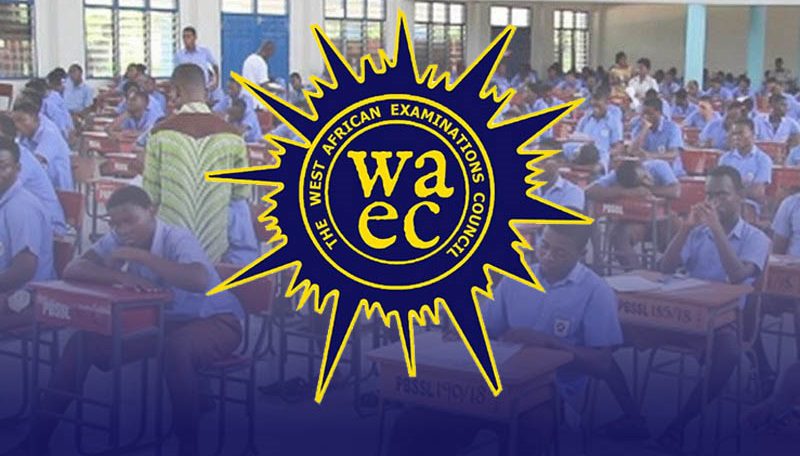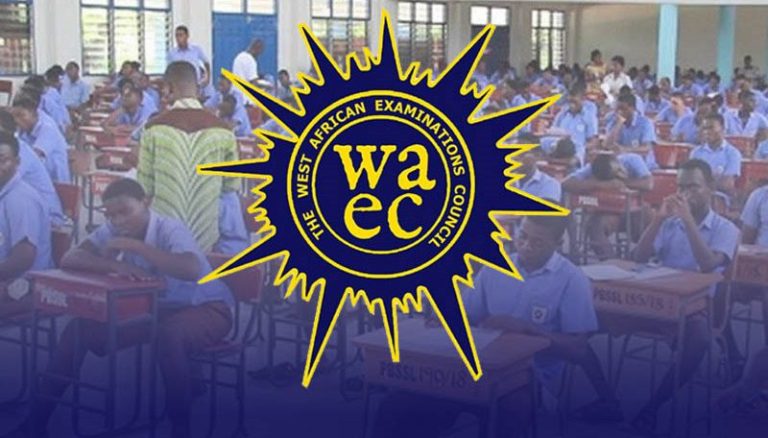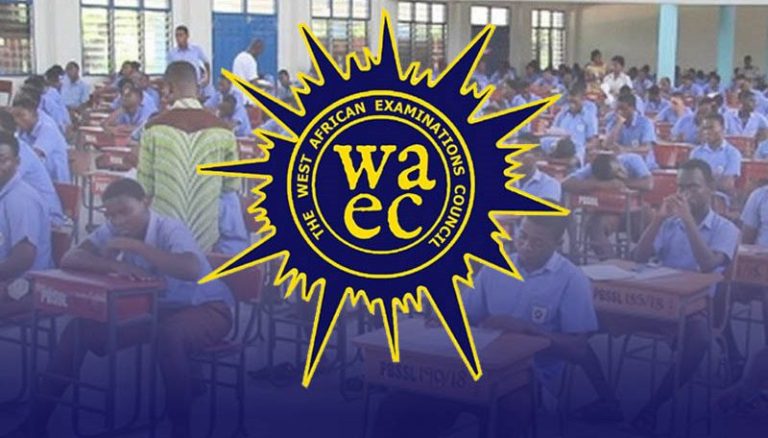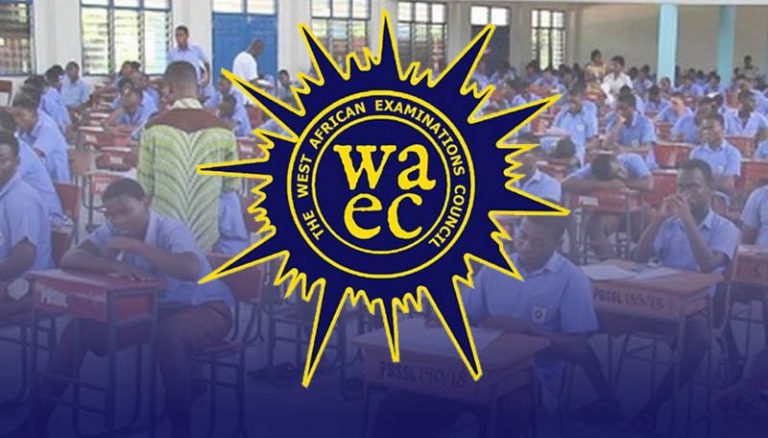
WAEC Physics Practical Specimen 2025/2026: The WAEC Physics Practical Specimen for 2025/2026 examination comprises three sets of questions, each with its unique equipment and materials. Let’s delve into each of these sets to gain a better understanding of what students can expect.
WAEC Physics Practical Specimen 2025/2026
In the 2025/2026 WAEC Physics Practical examination, candidates will encounter various sets of questions, each designed to assess their practical understanding of physics concepts. These questions are divided into three sets, each accompanied by a specific set of equipment and materials. Here, we will provide a brief overview of the materials and equipment for each set.
See the WAEC Physics Practical Specimen 2025/2026 below:
QUESTION 1
- A load of mass 100g concealed and labelled as P
- A load of mass 20g concealed and labelled as Q
- A set of masses m (40g, 50g, 60g, 70g and 80g)
- Metre rule
- 100cm piece of string
- Stopwatch
- Helical spring
- Retort stand set-up
- Knife edge
QUESTION 2
- A rectangular block (glass or Perspex) measuring at least 10cm×9cm
- Drawing sheet
- Drawing board
- Four optical pins
- Drawing pins
- Triangular prism
- Half metre rule
- Plane mirror
QUESTION 3
- 1Ω standard resistor labelled R
- Rheostat
- Voltmeter
- Ammeter
- Key/switch
- Source of emf, E=2F
- Ten connecting wires
- Resistance box
- Jockey
- Metre bridge
In summary, the WAEC Physics Practical Specimen for the 2025/2026 examination presents students with three distinct sets of questions, each accompanied by specific materials and equipment. These sets cover a range of physics concepts, from mechanics and optics to electrical circuits. Candidates are encouraged to familiarize themselves with the provided materials and practice their experimental skills to excel in this practical examination.
Detailed Explanation of the WAEC Physics Practical Specimen 2023/2024
Set 1 Specimen Details:
Load P (100g): This specimen is a concealed object with a mass of 100 grams. It is labeled as “P” and will be used in experiments related to mechanics and mass.
Load Q (20g): Another concealed object, labeled as “Q,” has a mass of 20 grams. It will also be utilized in experiments related to mechanics and mass.
Set of Masses (40g, 50g, 60g, 70g, 80g): This set consists of five masses with varying weights, ranging from 40 grams to 80 grams. These masses can be added or removed from the experimental setup to investigate the effects of different masses on various physical phenomena.
Meter Rule: A meter rule, a measuring instrument 100 centimeters in length, is provided for measurements involving length and distance.
100cm Piece of String: The string, 100 centimeters long, will be used for tasks requiring measurements, suspensions, or other applications in the experiments.
Stopwatch: A stopwatch is included to measure time intervals accurately, facilitating experiments that involve timing and motion.
Helical Spring: The helical spring will likely be used in experiments related to elasticity, oscillations, and force.
Retort Stand Set-Up: This set-up is essential for supporting various apparatus during experiments, providing stability and precision.
Knife Edge: The knife edge is a critical component for balancing objects and conducting experiments that require precise equilibrium.
Set 2 Specimen Details:
Rectangular Block (Glass or Perspex): This specimen is a rectangular block made of either glass or Perspex, measuring at least 10 centimeters by 9 centimeters. It will be used in experiments related to optics and the behavior of light.
Drawing Sheet: A drawing sheet is provided for tasks involving sketches, diagrams, and recording experimental observations.
Drawing Board: The drawing board serves as a stable surface for performing experiments and creating diagrams.
Four Optical Pins: Optical pins are crucial for directing and reflecting light in experiments involving optics.
Drawing Pins: These pins may be used to secure materials in place during experiments or to attach items to the drawing board.
Triangular Prism: The triangular prism is a geometric object used in experiments to investigate the dispersion of light and other optical phenomena.
Half Meter Rule: This measuring instrument, half a meter in length, will be used for measurements involving length and distance in optical experiments.
Plane Mirror: The plane mirror is utilized in experiments to study the reflection of light and its properties.
Set 3 Specimen Details:
1Ω Standard Resistor (R): This resistor is labeled as “R” and has a resistance of 1 ohm. It will be used in electrical circuit experiments to control and measure electrical resistance.
Rheostat: The rheostat is a variable resistor that allows candidates to adjust electrical resistance in circuit experiments.
Voltmeter: A voltmeter is included for measuring voltage in electrical circuits accurately.
Ammeter: The ammeter is used to measure electrical current in circuits, providing important data for electrical experiments.
Key/Switch: This component allows candidates to open or close electrical circuits, enabling them to control the flow of electricity during experiments.
Source of emf (E=2F): This source of electromotive force (emf) provides electrical energy for various circuit experiments. It has an emf value of 2 volts.
Ten Connecting Wires: Connecting wires are essential for creating electrical circuits, allowing candidates to connect various components and instruments.
Resistance Box: The resistance box contains additional resistors of known values that can be added to or removed from circuits to adjust resistance levels.
Jockey: The jockey is a movable conductor used to make contact with different parts of a circuit, allowing candidates to take measurements and perform experiments involving resistors and bridges.
Meter Bridge: The meter bridge is used in experiments related to electrical resistance measurements, providing a balanced bridge circuit for precise resistance calculations.
FAQs
What are the specimens for the Physics Practical exam in WAEC 2025/2026?
The specimens for the WAEC 2025/2026 Physics Practical exam consist of three distinct sets of materials and equipment. In the first set, students will encounter loads labeled as “P” and “Q” with masses of 100g and 20g, respectively, along with a range of masses, a meter rule, a piece of string, a stopwatch, a helical spring, and other apparatus. The second set includes a rectangular block (glass or Perspex), drawing materials, optical pins, a triangular prism, and more, primarily focusing on optical experiments. The third set comprises items such as a standard 1Ω resistor labeled “R,” a rheostat, voltmeter, ammeter, and electrical components for circuit experiments. These specimens are designed to assess students’ practical understanding of various physics concepts and provide a comprehensive evaluation of their laboratory skills in the 2025/2026 WAEC Physics Practical examination.
What is the WAEC Physics Practical Specimen for the 2025/2026 examination?
The WAEC Physics Practical Specimen for the 2025/2026 examination consists of three sets of questions, each accompanied by specific equipment and materials. These sets cover various physics concepts, including mechanics, optics, and electrical circuits.
Can you provide more details about Set 1 of the WAEC Physics Practical Specimen?
Certainly. Set 1 includes a concealed load labeled “P” with a mass of 100g, another load labeled “Q” weighing 20g, a set of masses (40g, 50g, 60g, 70g, and 80g), a meter rule, a 100cm piece of string, a stopwatch, a helical spring, a retort stand set-up, and a knife edge. Candidates will use these materials for experiments related to mechanics.
What equipment and materials are involved in Set 2 of the examination?
Set 2 comprises a rectangular block (glass or Perspex) measuring at least 10cm by 9cm, a drawing sheet, drawing board, four optical pins, drawing pins, a triangular prism, a half-meter rule, and a plane mirror. This set focuses on exploring the behavior of light and optics.
What can you tell us about Set 3 of the WAEC Physics Practical Specimen?
Set 3 introduces materials such as a 1Ω standard resistor labeled “R,” a rheostat, a voltmeter, an ammeter, a key or switch, a source of emf with E=2F, ten connecting wires, a resistance box, a jockey, and a meter bridge. Candidates will engage in experiments related to electrical circuits and measurements in this set.
How should candidates prepare for the WAEC Physics Practical examination?
To prepare effectively, candidates should familiarize themselves with the equipment and materials associated with each set of questions. Practice experiments related to mechanics, optics, and electrical circuits to build confidence and accuracy in performing the practical tasks.
Are there any specific tips for success in the WAEC Physics Practical examination?
Yes, practice is key. Additionally, pay attention to safety protocols, follow instructions carefully, and ensure accurate measurements. Time management is crucial, so allocate sufficient time to each experiment and review your work before submission.
What is the importance of the WAEC Physics Practical examination?
The practical examination assesses students’ ability to apply theoretical knowledge to real-world experiments. It evaluates their practical skills, problem-solving abilities, and understanding of physics concepts, making it an essential component of the WAEC Physics examination.
How can candidates excel in the WAEC Physics Practical Specimen 2025/2026?
Candidates can excel by practicing with the provided equipment and materials, understanding the underlying physics principles, and staying organized during the examination. Consistent practice and attention to detail are key to success.
MORE WAEC SPECIMEN:
- WAEC Biology Practical Specimen 2025/2026
- WAEC Physics Practical Specimen 2025/2026
- WAEC Chemistry Practical Specimen 2025/2026
- WAEC Agricultural Science Practical Specimen 2025/2026
- WAEC Animal Husbandry Practical Specimen 2025/2026
- WAEC Fisheries Practical Specimen 2025/2026
- WAEC Data Processing Practical Specimen 2025/2026
- WAEC Computer Studies Practical Specimen 2025/2026
- WAEC Visual Art Practical Specimen 2025/2026
- WAEC Technical Drawing Practical Specimen 2025/2026
Conclusion
As students prepare for the 2025/2026 WAEC Physics Practical examination, it is essential to grasp the equipment and materials associated with each set of questions. This knowledge will enable them to approach the practical tasks with confidence and accuracy, ultimately contributing to their success in this important examination. Best wishes to all candidates as they embark on their physics practical journey.







